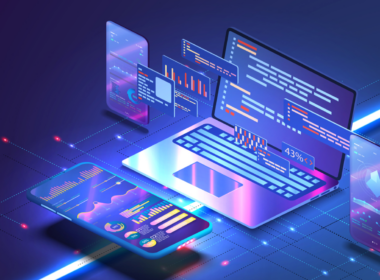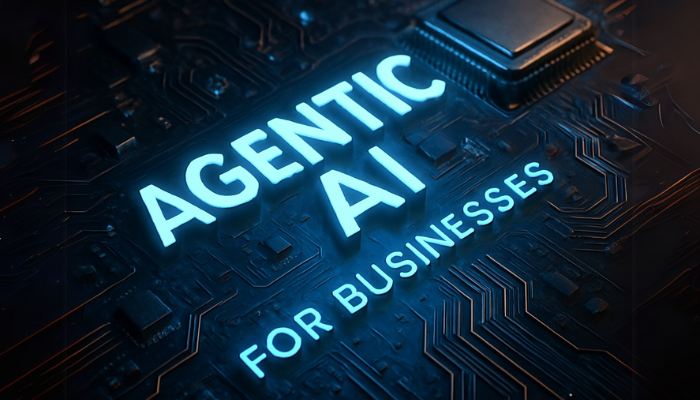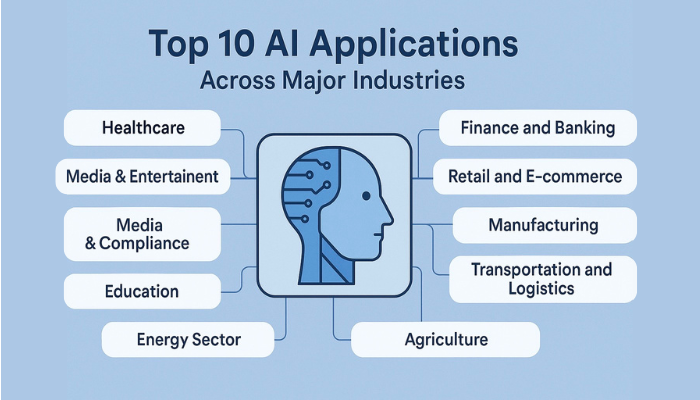2025 isn’t just another year on the AI timeline, it’s a breaking point. It is the moment where Agentic AI becomes business reality.
Agentic AI means systems that think, plan, and act independently to achieve goals without waiting for constant human instructions. They’re not just assistants; they make decisions and take actions based on the outcomes that matter most to you.
The shift is already in motion. Gartner predicts that by 2025, 70% of organizations will operationalize AI designed for autonomy. For businesses, agentic AI in 2025 isn’t just about automating tasks; it’s about giving systems the power to manage and optimize entire business functions on their own.
If you’re leading a company today, you can’t afford to miss out on the incredible potential of agentic AI. In this article, we will walk you through the biggest trends that will define agentic AI. If you’re planning to lead, not chase, you’ll want to read every word.
What Is Agentic AI?
In 2025, the question isn’t “What is Agentic AI?”—it’s “How fast can I implement it?” Agentic AI is here to transform business operations from the ground up. Picture this: Instead of waiting for a human to dictate the next move, a system that thinks on its own, predicts outcomes, and acts to achieve your business goals.
At its heart, Agentic AI is autonomous intelligence. It’s not limited to repeating the same tasks; it adapts, learns, and grows to meet new challenges.
These systems possess four key attributes:
- Proactivity: They don’t wait for instructions, they take the initiative to solve problems and drive outcomes.
- Autonomy: With minimal human intervention, they handle tasks, adapt to changes, and make decisions independently.
- Adaptability: Whether it’s market fluctuations or internal process shifts, agentic AI adjusts seamlessly to new circumstances.
- Decision-Making: They don’t just follow programmed instructions. Instead, they use data to make complex decisions that benefit your business.
Traditional Automation vs. Agentic AI: A Quick Breakdown
| Traditional Automation | Agentic AI |
| Executes tasks based on preset instructions | Predicts, adapts, and evolves based on data |
| Handles repetitive, rule-based tasks | Tackles complex, strategic decision-making |
| Needs constant monitoring | Operates autonomously, freeing up time for growth |
| Cannot learn or improve | Continuously learns from data and optimizes results |
Example: How Agentic AI Can Work for You
Imagine you’re running an e-commerce business during a big sale event. Traditionally, your inventory system tracks sales and triggers restocking orders manually. But with Agentic AI, the system doesn’t wait for you to tell it what to do. It continuously monitors sales, predicts future demand, and adjusts inventory levels in real-time.
If the system detects a surge in demand for a specific product, it can automatically reorder, reroute stock from other warehouses, and even adjust pricing to ensure maximum profitability, all without your intervention. This level of proactivity saves you time, reduces errors, and maximizes revenue, ensuring your business is always ahead of the game.
Also worth your time: Want to see how Agentic AI takes process automation to an entirely new level? Check out our guide: Mastering Agentic Process Automation.
As we look ahead, here are the key trends shaping Agentic AI in 2025 that will redefine business operations.
Breaking Down the Major Agentic AI Trends for 2025
Agentic AI in 2025 isn’t just some passing trend, it’s the game-changer that’s about to flip the script on everything we do. And guess what? The numbers back it up: global spending on AI systems is expected to soar to $300 billion by 2026, growing at a sizzling 26.5% year-on-year.
Here’s a quick dive into the agentic AI trends of 2025 that’ll leave you thinking, “This is the future.”
1. Hyper-Autonomous Enterprise Systems
AI doesn’t wait for instructions, it moves the business forward, minute by minute. No micromanaging. No dashboard-hopping. Your AI agent flags supplier risks, closes procurement deals, reroutes logistics, and reallocates team resources, before you even notice the shift.
- Procurement: Inventory stays balanced. AI predicts demand swings and seals vendor contracts without bogging down teams.
- Workflow Management: Projects stay on track. AI monitors timelines, auto-corrects resource gaps, and reschedules tasks on the fly.
- Logistics: Shipments dodge delays. AI adjusts delivery routes in real time, based on traffic, weather, or border disruptions.
And this isn’t theoretical anymore. Deloitte projects that 25% of enterprises using GenAI will deploy autonomous AI agents in 2025, doubling to 50% by 2027. Smart companies are letting AI drive growth, efficiency, and resilience, hands-free.
2. Multi-Agent Collaboration Models
AI agents don’t work in silos, they collaborate across departments like seasoned teams.
- HR agents now sync with finance agents to approve job offers in real-time, eliminating manual delays.
- AI-driven inventory systems autonomously manage stock, automatically reorganize shelves, and conduct audits without human oversight.
- Operations across departments flow more efficiently as these AI agents coordinate efforts without being micromanaged.
Take Amazon’s autonomous agents in their warehouses. Powered by Kiva robots and machine learning optimization agents, their system handles everything from stock replenishment to inventory audits. The payoff:
- 20% cut in operating expenses
- 50% faster inventory management
- 40% fewer warehouse accidents
This is the future: multi-agent systems working in harmony, solving problems before they even arise.
3. Self-Evolving AI Architectures
Businesses no longer need to babysit their AI systems. Instead of waiting for manual updates, AI is now self-optimizing, continuously learning from real-time data and adjusting strategies on its own.
How It Looks in Action:
- A marketing AI automatically reallocates ad budgets based on shifting consumer behavior, no human intervention needed.
- AI-driven customer support bots not only solve tickets but also flag recurring issues and recommend service upgrades.
- HR AI systems quietly refine recruiting strategies by analyzing which candidates succeed over time, without needing new programming.
This isn’t science fiction. Accenture’s Technology Vision 2024 highlights how this shift is set to transform business operations. Imagine a business where AI improves itself: optimizing inventory levels, tweaking sales tactics, or refining your product’s user interface, all on its own, based on live feedback.
The key takeaway: adapt or fall behind.
4. Governance-First AI Deployment
Gone are the days of rushing to deploy AI without considering the consequences. With increasing regulations like the EU AI Act and U.S. Executive Orders, businesses are now prioritizing governance-first strategies for AI deployment. It’s not just about speed anymore; it’s about building safely, with a focus on ethics, transparency, and accountability.
How It Looks in Action:
- AI systems must now have accountability logs that track decision-making processes and outcomes, making it easier to audit and understand AI behavior.
- Explainability frameworks ensure that AI decisions are transparent and comprehensible to both users and regulators. This helps prevent biases, enhances trust, and ensures compliance with laws.
- Companies must demonstrate that AI models are trained on fair, non-biased data and comply with ethical guidelines for decision-making.
Governance-first deployment ensures that businesses stay compliant while fostering consumer trust.
5. Rise of Vertical-Specific Agentic Solutions
The AI revolution is shifting gears. Industries are now seeking AI tailored to their unique needs. From healthcare to finance, businesses are turning to vertical-specific agentic solutions that solve problems at a granular level.
How This Benefits Businesses:
- Healthcare: Diagnostic agents now assist doctors in analyzing medical images, identifying patterns in patient data, and predicting potential health risks. These systems continuously learn from new cases, providing doctors with real-time, data-driven insights.
- Finance: In finance, trading bots are now capable of analyzing market trends, adjusting portfolios, and executing trades based on real-time data, all without human intervention. These bots not only optimize profits but also minimize risks by using predictive analytics.
- Manufacturing: AI agents can monitor production lines, predict equipment failures, and optimize workflows, leading to faster production times and lower maintenance costs.
6. Disinformation Security
Misinformation campaigns pose existential risks to brand integrity and stakeholder confidence. Disinformation security frameworks empower enterprises to detect, analyze, and neutralize malicious narratives before they spread, safeguarding reputation and trust.
How It Looks in Action:
- Implement NLP-driven forensic engines that flag coordinated misinformation campaigns.
- Automate content-verification workflows to quarantine suspect material in real time.
- Integrate cross-channel monitoring to trace and counteract false narratives proactively.
Disinformation security ensures your organization remains resilient against reputational threats.
7. Post-Quantum Cryptography
Quantum advances threaten legacy encryption schemes, making future-proof data protection imperative. Post-quantum cryptography initiatives guide enterprises in adopting quantum-resistant algorithms, securing sensitive assets against next-generation attacks.
How It Looks in Action:
- Evaluate and select lattice-based, code-based, or multivariate cryptographic frameworks.
- Develop phased migration roadmaps that retrofit existing PKI and VPN infrastructures.
- Conduct interoperability testing to validate seamless operation across hybrid deployments.
Post-quantum cryptography future-proofs security postures without disrupting business continuity.
8. Ambient Invisible Intelligence
Embedding edge sensors and smart tags transforms physical spaces into self-optimizing ecosystems. Ambient invisible intelligence delivers continuous, context-aware insights that streamline operations with zero user friction.
How It Looks in Action:
- Deploy pervasive sensor networks to monitor assets, inventory levels, and environmental parameters.
- Utilize edge ML analytics to surface actionable alerts and auto-tune workflows.
- Enable adaptive environments that adjust lighting, climate, or layout in response to live data.
Ambient invisible intelligence delivers seamless operational agility across the enterprise.
9. Energy-Efficient Computing
Sustainable IT is now a board-level mandate as AI workloads surge. Energy-efficient computing brings together power-aware hardware designs and intelligent workload orchestration to align performance goals with carbon-reduction targets.
How It Looks in Action:
- Invest in next-generation chip architectures featuring integrated power-management capabilities.
- Leverage software orchestrators that dynamically shift non-critical workloads to off-peak windows.
- Monitor real-time power usage metrics to continuously refine energy-taxonomy policies.
Energy-efficient computing delivers high throughput while advancing corporate sustainability.
10. Hybrid Computing
No single compute paradigm suffices for every enterprise workload. Hybrid computing converges CPUs, GPUs, FPGAs, and quantum accelerators into unified platforms, dynamically allocating tasks to the optimal fabric based on real-time objectives.
How It Looks in Action:
- Architects converged data centers that present heterogeneous resources under a unified control plane.
- Employ AI-driven schedulers that migrate jobs across fabrics to balance latency, throughput, and cost.
- Integrate policy-based governance to enforce SLAs and compliance across hybrid environments.
Why settle for smart when you can go agentic?
At Codewave, we don’t just build AI, we craft self-driving systems that make decisions, learn in real-time, and steer your business with zero hand-holding. From autonomous ops to intelligent vertical solutions, our AI/ML development redefines what’s possible.
Let’s co-create agentic AI that doesn’t just support your operations, but leads them.
Future Outlook: Immediate Actions for 2025 Readiness
The future is knocking, and 2025 is just around the corner. If you’re serious about staying ahead, now is the time to make bold moves. Here’s how to get ready for the AI-powered future:
- Adopt Early
Start integrating agentic AI systems into your operations now. Don’t wait for the technology to become ubiquitous before you make a move. Running pilot projects with agentic AI will help you identify high-value use cases, test scalability, and refine your strategy.
These early experiments allow you to better understand the specific benefits of autonomous AI, such as improving efficiency, reducing operational costs, and increasing responsiveness to market changes.
- Upskill Your Workforce
The future of work is centered around collaboration between humans and AI. Invest in upskilling initiatives to ensure your teams are equipped with the skills to work alongside AI systems effectively.
Provide training that focuses on AI literacy, data analysis, and decision-making based on AI-driven insights. This approach transforms your workforce into key players who understand how to leverage AI for business strategy, improving innovation and operational efficiency.
- Governance From Day One
AI adoption must be accompanied by a strong governance framework. Prioritize ethics and transparency from the start, especially as agentic AI will have direct decision-making power. Ensure compliance with regulations regarding data privacy, algorithmic fairness, and transparency.
Develop accountability systems for AI decision-making processes to maintain stakeholder trust. The sooner you establish these safeguards, the easier it will be to avoid regulatory pitfalls and prevent biases, which could damage your reputation in the long term.
- Strategic Innovation Partnerships
Agentic AI adoption is not an isolated initiative, it requires ecosystem-level collaboration. Partnering with innovation-led firms like Codewave enables rapid execution of complex AI strategies while minimizing internal friction. These partnerships provide access to specialized expertise, scalable platforms, and validated implementation frameworks.
Rather than building from scratch, businesses can co-develop agentic systems that are aligned to specific industry needs, accelerating go-to-market timelines and reducing transformation risk.
The 2025 Readiness Checklist You Need:
- Launch Agentic AI Pilots: Identify 2–3 core operational areas (e.g., supply chain, customer service, finance) where agentic AI can drive measurable outcomes. Define KPIs before deployment to track performance impact.
- Institutionalize Workforce Upskilling: Develop structured training programs on AI ethics, automation workflows, and decision support tools across business functions, not just IT.
- Codify AI Governance: Establish internal AI governance boards, create audit logs for agent decisions, and implement model explainability protocols to ensure compliance with emerging regulations.
- Form Strategic Alliances: Engage with AI engineering partners to co-develop custom solutions, integrate emerging models, and run iterative innovation cycles without resource overload.
Immediate readiness is only half the equation. To lead, not follow, enterprises must anticipate where agentic AI will drive transformation beyond 2025.
Agentic AI Beyond 2025: The Road to Next-Generation AI Ecosystems
2025 is not the endgame. It’s only the beginning. While agentic AI is already transforming enterprises, the horizon stretches far beyond this pivotal moment. The next phase of AI evolution will see systems becoming even more autonomous, collaborative, and deeply integrated into organizational ecosystems.
Here’s a glimpse into the future, where agentic AI evolves into interconnected, self-sustaining ecosystems that radically transform industries:
1. Super-Agent Ecosystems
Forget siloed departments, imagine autonomous agents working in lockstep across teams, vendors, and supply chains. These “super-agent ecosystems” will break down traditional barriers, creating fluid, high-speed workflows across entire organizations. By 2028, 30% of Fortune 500 companies will operate these multi-agent systems, making agility the new norm for enterprise operations.
The takeaway? Expect a massive boost in efficiency and faster decision-making as AI agents handle everything from cross-functional collaboration to optimizing complex supply chains in real-time.
2. Self-Governing Agents
The next step? AI agents that no longer require human micromanagement. These agents will autonomously monitor, govern, and even fix each other, think self-correcting supply chain bots or customer service AI that adapts on the fly. This will dramatically reduce operational risks and enable businesses to scale more efficiently with far less human oversight.
This means businesses will operate faster and smarter, with AI keeping things in check without the need for constant oversight.
3. AI + Quantum Computing
Quantum computing will turbocharge agentic AI, enabling agents to make incredibly fast and complex decisions. We’re talking about ultra-quick logistics optimization and real-time forecasting that can handle millions of variables simultaneously. The result? A whole new level of problem-solving that can only be described as “futuristic”, think AI that can solve today’s toughest challenges instantly.
4. Ethical AI
Ethical AI isn’t just an add-on, it’s going to define the future. In the years to come, businesses will be evaluated based on how responsibly their autonomous agents operate. Companies that build ethical, transparent AI systems will gain trust, stay ahead of the curve, and stand out in a crowded marketplace.
In short? Ethics will be a major competitive advantage. Play it right, and your AI won’t just perform better, it’ll be trusted more.
Build Agentic AI with Codewave
At Codewave, we engineer agentic AI products that go beyond automation. Our systems are goal-driven, context-aware, and capable of autonomous decision-making within business-defined boundaries. Whether it’s optimizing supply chains, augmenting customer interactions, or generating strategic recommendations, our solutions are built to adapt and act.
Here’s how we do it:
- Multimodal LLM Integration: We build with OpenAI, Claude, Gemini, and open-source models like Mistral and LLaMA for grounded, high-context reasoning.
- Autonomous Agent Orchestration: Using frameworks like LangGraph and AutoGen, we deploy agents that plan, retrieve, and act based on business objectives.
- RAG Pipelines at Scale: We design scalable Retrieval-Augmented Generation systems with Weaviate, Pinecone, and Chroma for real-time, domain-specific insights.
- Action Layer Integration: Our agents don’t stop at insights—they trigger real actions across CRMs, ERPs, and internal tools via secure API calls.
- Trust-by-Design Architecture: We embed observability, auditability, and governance frameworks from day one, ensuring safety, compliance, and transparency.
What outcomes can you expect?
- 60–80% reduction in manual decision cycles
- Autonomous workflows across finance, ops, and CX
- Human-in-the-loop systems that scale without risk
- A future-ready AI core tailored to your domain
Connect with us to turn your AI vision into a reality, designed for tomorrow, built for today.
Wrapping Up
Agentic AI isn’t just knocking on the door anymore, it’s breaking it down. In 2025, businesses will no longer debate whether AI will reshape industries; the question will be, “How fast can you ride this wave?” Those who act quickly will redefine operations, customer interactions, and even decision-making. It’s not about waiting for AI to catch up with your business, it’s about your business adapting to AI’s unstoppable momentum. Speed is key, and the clock is ticking.
Codewave builds agentic AI that acts, not just analyzes—deploying autonomous agents across operations, CX, and strategy. With embedded governance and real-time execution, we turn AI into enterprise muscle. Ready to move from pilots to production? Let’s talk.
Also read: Agentic AI vs AI Agents: Key Differences Explained
Codewave is a UX first design thinking & digital transformation services company, designing & engineering innovative mobile apps, cloud, & edge solutions.







